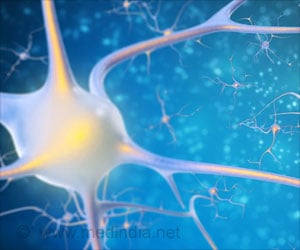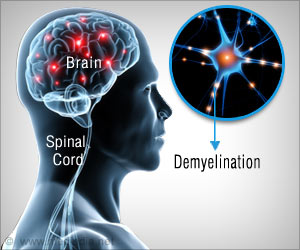- Scientists from the Exeter School of Medicine and The University of Alberta have identified a key protein associated with the development of multiple sclerosis
- Rab32 is a protein that is found to bring the calcium storing endoplasmic reticulum into close proximity of the mitochondria
- The resultant changes to the mitochondria lead to the development of multiple sclerosis
An underlying defect in the brain was identified by the scientists, which could be the cause for multiple sclerosis and a potential target for therapy. Multiple sclerosis, according to Dr. Paul Eggleton from the University of Exeter Medical School, is a serious condition and can have a devastating effect on the individual. It affects the memory of the individual, speech along with problems in mental ability.
Multiple Sclerosis:
The cause for this condition has remained unknown, despite the condition affecting about 2.5 million people across the world. It affects more women than men, and people as young as in their 20s and 30s.
It is a disease that affects the nervous system and is known to be an autoimmune disease. The disease is usually mild but can develop to affect the quality of life drastically. There are currently no known tests to determine multiple sclerosis and it is identified by doctors through physical examination, medical history, neurological examination and MRI. There is no known cure for this condition but medications help in delaying progression.
Multiple sclerosis is believed to occur when the body’s own immune cells affect the fatty myelin sheath that covers the brain and spinal cord, preventing the nerves from damage. This results in
- damage to the brain
- lowering of the blood supply and oxygen to the brain
- development of lesions on the body
- leading to problems with mobility, fatigue, muscle spasms, pain and speech
- muscle weakness
- prickling feeling, pins and needles
- problems with co-ordination
- visual disturbances
- memory problems
The 5 key abnormalities were:
- Defects in the mitochondria
- Variations in the mitochondrial genes
- Abnormalities in the mitochondrial enzymes
- Deficiency in the DNA activity of the mitochondria
- Dysfunction of the mitochondria
The presence of the protein Rab32 resulted in the endoplasmic reticulum, or the part of the cells that store calcium, to get very close to the mitochondria. There is then a miscommunication when the calcium supply incites the mitochondria to turn rogue and lead to toxicity in the brain cells. Currently, the researchers have not been able to identify the reason behind the production of Rab32 but they hypothesize that it could originate from the base of ER organelle.
The current study can be used to develop therapy that targets the Rab32, preventing it from causing damage to the brain that leads to multiple sclerosis.
The study found support from the multiple Sclerosis Society with Dr. David Schley adding that as there is no known cause for multiple sclerosis, any research that offers to throw light on that would help in better treatment in the future. According to Dr. Schley, there is no known cure for 100,000 people with multiple sclerosis who live in the U.K. Discovering the cause for the disease condition would help in identifying better treatment strategies.
References:
- What Is MS? - (http://www.nationalmssociety.org/What-is-MS)
- Multiple Sclerosis - (https://medlineplus.gov/multiplesclerosis.html)












